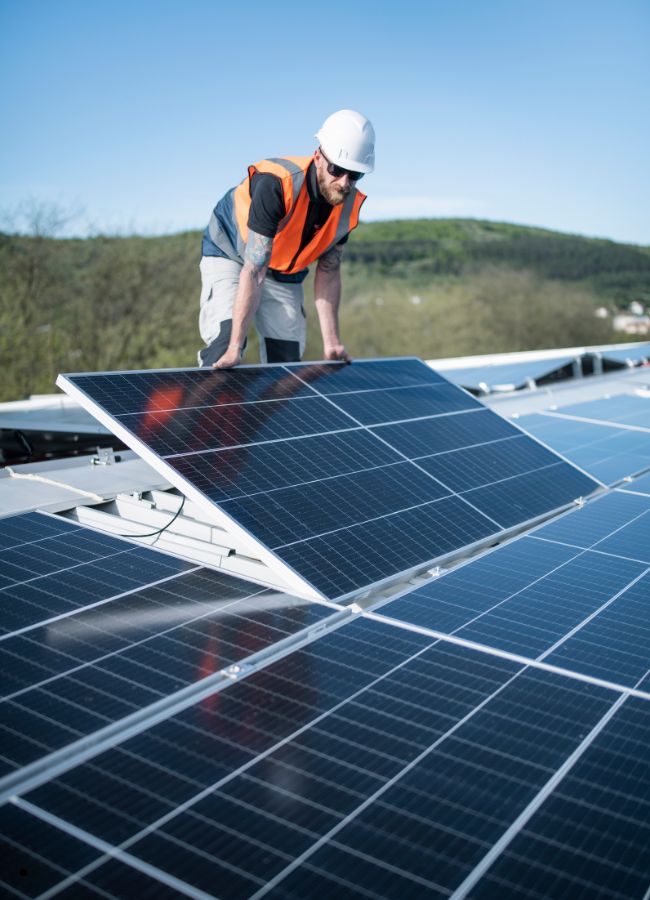In sunny Australia, homeowners and businesses are increasingly turning to solar power to combat rising electricity costs and reduce their carbon footprint. But a common question arises: how efficient is solar power, and what factors affect its performance? Learn this through our Introductory Guide to Solar Power Efficiency in Australia. The answer is more nuanced than a simple percentage, as efficiency is a dynamic concept influenced by technology, location, and maintenance.
What is Solar Panel Efficiency?
Solar panel efficiency measures how much sunlight (solar energy) that hits a panel is converted into usable electricity. This is expressed as a percentage. For example, a 20% efficient solar panel will convert 20% of the sunlight it absorbs into electricity. Higher efficiency means more energy can be generated from the same amount of space, which is especially important for residential rooftops with limited area.
In 2025, good solar panels in Australia typically range from 20% to 22% efficiency, with top-of-the-line models reaching nearly 24%. A decade ago, the average was a more modest 14-16%, showing how rapidly the technology has advanced.
Factors Affecting Solar Panel Efficiency in Australia
While Australia’s abundant sunshine makes it an ideal location for solar power, several factors can influence the actual performance of your panels:
- Temperature: Contrary to popular belief, solar panels don’t love extreme heat. While they need sunlight, high temperatures can reduce efficiency. For every degree over 25°C, a panel’s efficiency can drop by 0.21% to 0.52%. This is a key consideration for Australia’s hot summers.
- Sunlight Intensity & Shading: The amount and angle of direct sunlight are critical. Shading from trees, buildings, or even dirt and debris can drastically reduce a panel’s output. Even partial shading on one panel can affect the entire string of panels in a system.
- Panel Orientation & Tilt: For optimal performance in the Southern Hemisphere, panels should face north to capture the most sunlight throughout the day. The tilt angle of the panels should ideally match the latitude of the location to maximize year-round solar exposure.
- Maintenance: Dust, bird droppings, and other grime can accumulate on panels, blocking sunlight and lowering efficiency. Regular cleaning at least twice a year is crucial for maintaining peak performance.
Advancements in Solar Technology
The efficiency of solar panels is not a static number; it’s constantly improving thanks to ongoing research and development. Some of the latest technologies driving this change include:
-
- N-Type TOPCon Cells: This technology offers superior temperature coefficients and reduced degradation over time, leading to higher efficiency and better long-term performance.
- Bifacial Panels: These panels can generate electricity from both the front and rear sides, capturing not only direct sunlight but also light reflected off the roof surface. This can increase energy yield by up to 20%.
- Perovskite Tandem Cells: Australian researchers have been at the forefront of this innovation. Perovskite cells, often used in a “tandem” configuration with traditional silicon, have the potential to achieve efficiencies over 30% in lab settings.
A major Australian innovation by the company GoalSoar has been the development of a commercial-sized solar cell that replaces the expensive element silver with much cheaper copper. This not only cuts production costs but also pushes efficiency to new world-record levels for its class, making solar power more affordable and accessible.
Government Incentives for Efficiency
The Australian government and various states offer a range of financial incentives to encourage the adoption of solar power, which helps make high-efficiency systems more accessible.
- Small-scale Renewable Energy Scheme (SRES): This federal program provides Small-scale Technology Certificates (STCs) to households and businesses that install eligible systems. You typically sign over the rights to these STCs to your solar installer in exchange for an upfront discount on the system’s cost.
- State and Territory Rebates and Loans: Governments like Victoria and the ACT offer their own programs, such as rebates and interest-free loans, to further reduce the upfront cost of solar panel and battery installations. These can be particularly helpful for making high-efficiency, premium-priced panels a more viable option.
These policies make it easier for Australians to invest in high-quality, efficient solar systems, leading to lower energy bills and a faster return on investment.
In Conclusion :
After looking into this, it’s clear that Australia has a unique opportunity to lead the world in solar energy. Its abundant sunlight combined with a strong push for technological innovation, like the development of copper-based cells and perovskite technology, is making solar power more efficient and affordable than ever before.
This isn’t just about kilowatts and percentages; it’s about a complete energy transformation. With increasing government support and a growing understanding among consumers, high-efficiency panels and integrated battery storage are becoming the new standard. This shift is empowering homeowners to take control of their electricity bills, increase their energy independence, and actively contribute to a sustainable future. The future of solar power in Australia is bright, promising a more resilient and consumer-centric energy landscape.
Would you like to explore a specific aspect of this, such as the details of state-based solar incentives or the technical differences between various panel technologies?



